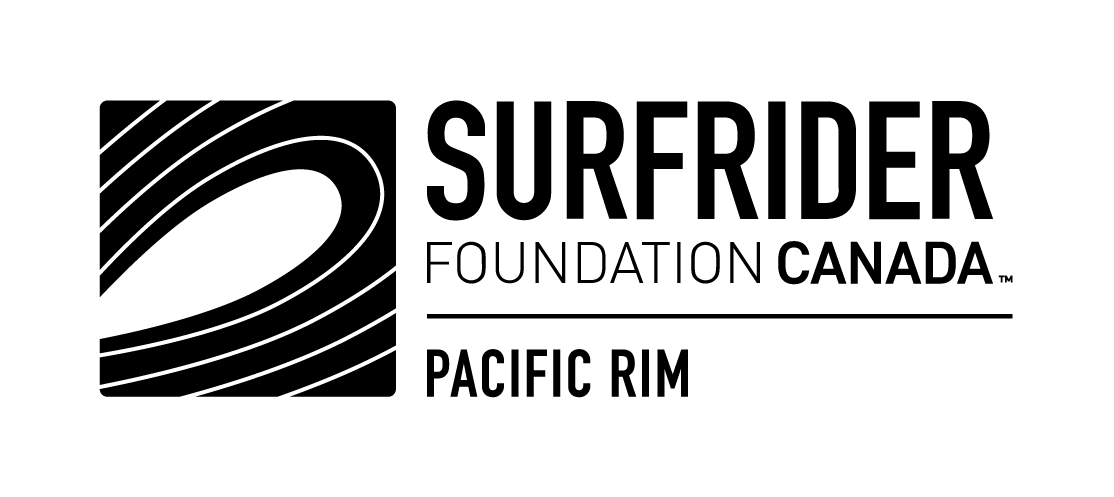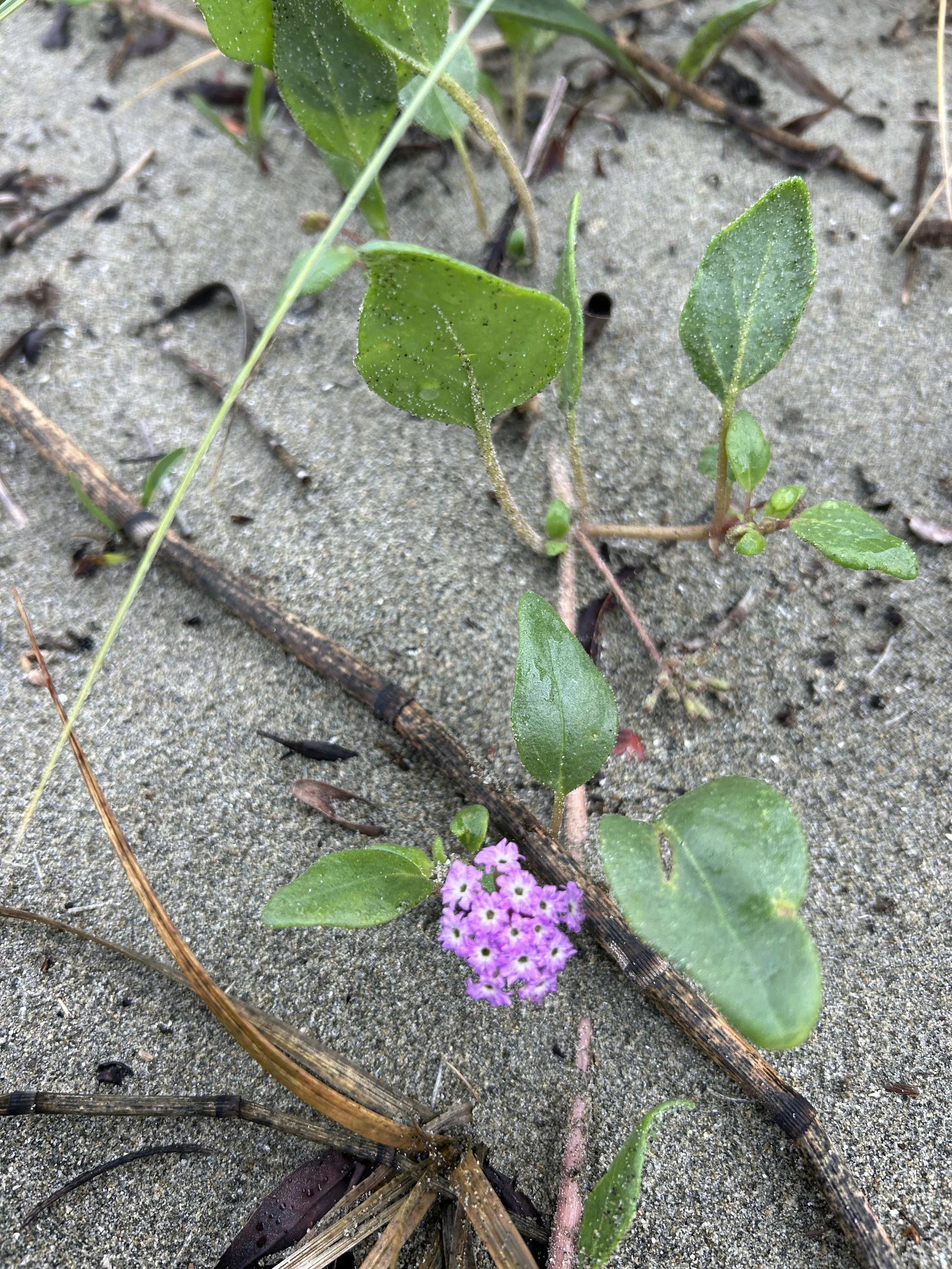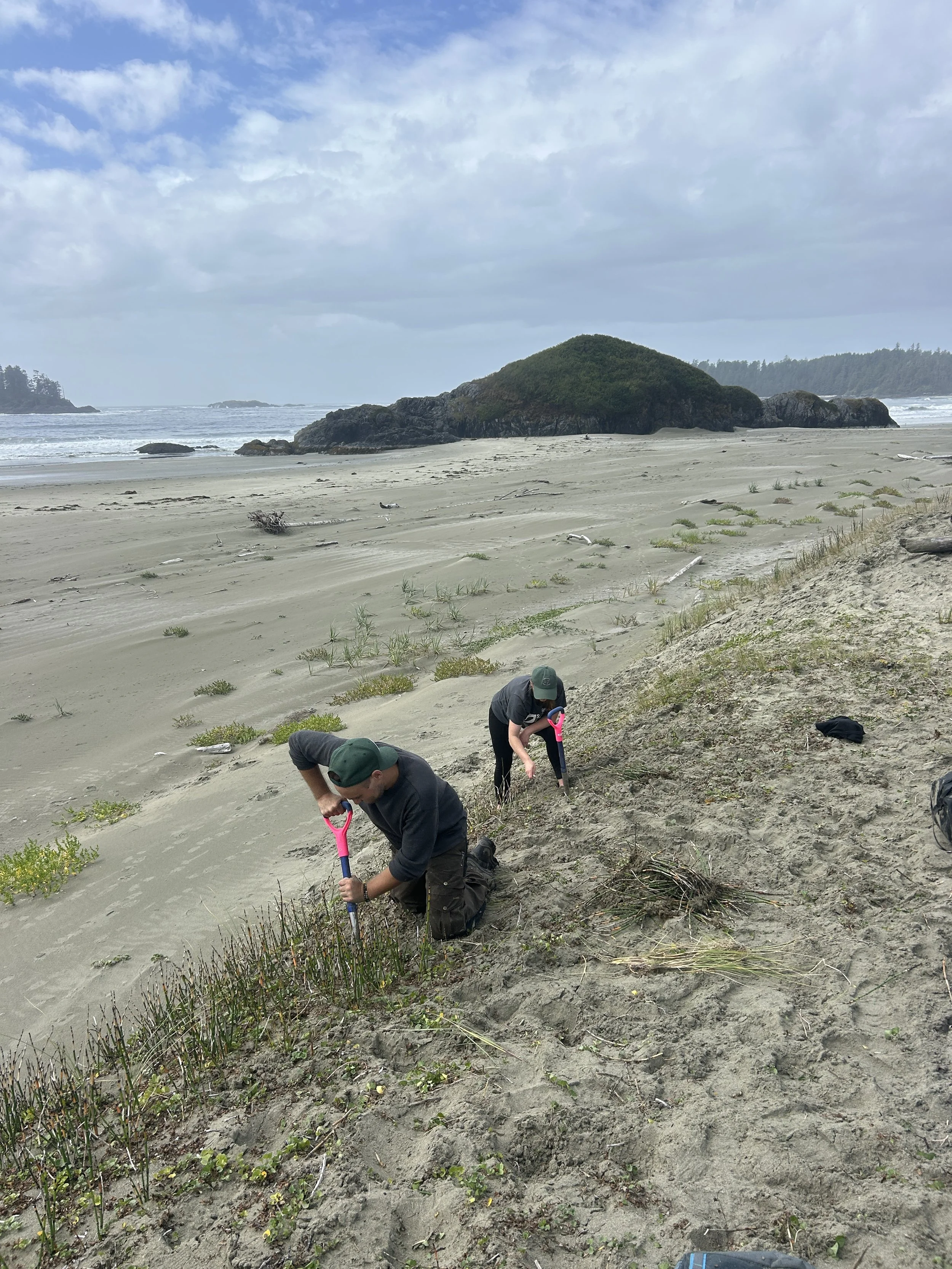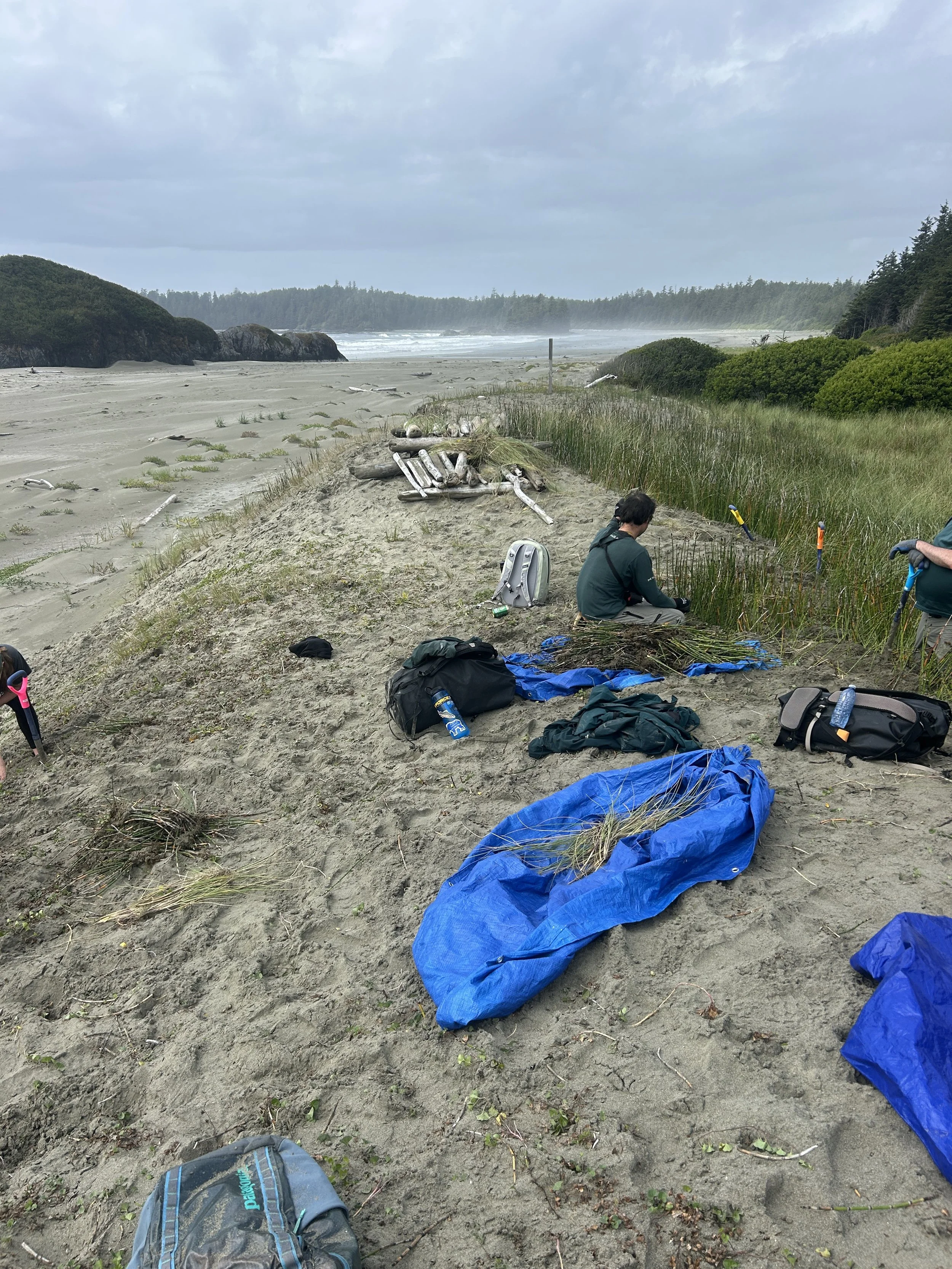Making Sand Dance: Dune Restoration in the Pacific Rim National Park Reserve
“The mystery of life isn’t a problem to solve, but a reality to experience. A process that cannot be understood by stopping it. We must move with the flow of the process. We must join it. We must flow with it.”― Frank Herbert, Dune
Going with the flow is a way of life on the West Coast, between reading the ever-evolving surf forecast and the weather that can change its mind every hour. On a rainy August Saturday morning near Tofino, BC, our group of Surfrider Pacific Rim volunteers and Parks Canada staff met at the Incinerator parking lot to head out on a journey: to restore the flow of the Schooner Cove Sand Dunes.
Secluded behind the iconic beaches of the Pacific Rim National Park Reserve (PRNPR) in the unceded and traditional territory of Tla-o-qui-aht First Nation is one of Canada’s rarest ecosystems: dunes. This spot is beyond the view of the highway and the busiest stretch of the beach - and is one of the very few of its kind in BC, with only 25 square km of dunes comprising this grand and diverse land mass. Their coverage couldn’t be farther from the science fiction novel of the same name - Dune, the desert dune-mantled planet of Arrakis. Unlike Arrakis, sand dunes cover less than 1% of British Columbia, and this number continues to diminish as they’ve decreased by 56% across coastal BC. The PRNPR dune system we hike into has declined by a third since 1970.
A dune is a rolling stretch of sandy hills or ridges parallel to the high tide line. Dunes are in constant flux, with the wind acting as an ephemeral architect. Dunes build, dissipate and move under wind and varying supplies of sand in coastal areas, deserts, and around lakes. These sand masses play a critical role in biodiversity by providing habitat for many species and acting as a wildlife corridor. Dunes also defend coastlines from the impacts of the climate crisis, including sea-level rise, increased storm intensity, floods and erosion. Upon a chance encounter with a dune, you’ll see the rolling slopes of sand appear as if they’ve been constructed by giants in the sky.
According to Parks Canada, there are two main threats to the dune systems in the PRNPR:
“invasive species - European (Ammophila arenaria) and American (Ammophila breviligulata) Beachgrass, which outcompete native plants, form a wall of grass and prevent sand movement. Plants that are unique to the sand dunes depend on dynamic sand movement. Sand travels from the shoreline into the dunes like a gradual, slow-moving wave creeping along and tossing small particles into the air. Without such movement, forest lands are quickly able to grow and encroach upon the dunes. Native sensitive species cannot compete against the rapid expansion of the forest and are easily threatened.”
The invasive beachgrasses arrived in BC through human introduction and natural processes. With the former, European beachgrass was intentionally brought to the United States in the late 1800s/early 1900s to stabilize dunes threatening to engulf waterfront property and infrastructure. Beachgrass was also planted to stabilize coastal dunes for railways, agriculture and other forms of development. Based on this successful technique, beachgrass was brought to British Columbia on the west coast of Vancouver Island and Haida Gwaii in the 1960s. Living species do not bow down to our artificial borders, so beachgrass continues to spread through natural dispersal. Rhizomes can break off and float in seawater, and take root upon coming to shore.
So, what do we do about this erosion of precious sand dunes? We find willing friends to head out into the dunes to deal with decades of poor decision-making and rip out the invasive beachgrass species. Luckily for our crew, the rain only lasted an hour, and the sun made a cameo appearance with some bears, opalescent squid eggs, and many other critters. From our group of 11 folks, we cleared a solid section of the dune from invasive beach grasses and overabundant weeds, making it possible for the sand dunes to dance and for rare plants to take hold. For instance, the pink sand verbena, which sounds like it's been made up from a fantasy science fiction, is a rare plant that was thought to be extirpated from Canada until a few plants were found on Vancouver Island in 2000. We even spotted these delicate pink flowers near our work site, bearing witness to nature bouncing back when we give it a chance.
The dune response to restoration efforts over the last 15 years has been fruitful, with 60% of the targeted dune ecosystem now restored. Parks Canada is seeing an increase in dune movement, and in some areas, the sand has blown back into the encroaching forest. There are also hundreds of rare native plants occurring in the sand dune systems. The goal is to restore the dunes to a natural functioning state, which is identified through Traditional Ecological Knowledge with Tla-o-qui-aht First Nation. Alongside restoration, we can work to protect all sand dunes in British Columbia and around the world. This includes continuing to advocate for the legal protection of dunes and continuing to steward dunes from disturbances like recreational use and invasive plants. If we’re visiting dunes, we need to proceed cautiously to avoid treading on the sensitive dune vegetation and respect fenced-off areas that may be especially vulnerable or need time to recover from past use. For the Schooner Cove Sand Dune, we’ve got ongoing work to continue removing invasive plants; a sweat-inducing job that will take hundreds of caring hands over many years to come.
To walk among and look after rare sand dunes is to remember that not all is lost. And every grain of sand is worth standing for.
You can learn more about the PRNPR’s efforts to restore dunes here.





